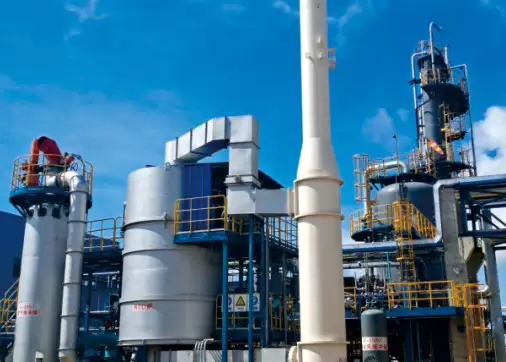RTO for screen printing
Introduction
Screen printing is a widely used technique in the printing industry. It involves using a mesh screen to transfer ink onto a substrate, creating vibrant and long-lasting prints. However, the process of screen printing can release harmful emissions into the atmosphere. This is where Regenerative Thermal Oxidizers (RTOs) come into play. RTOs are advanced air pollution control systems that efficiently destroy volatile organic compounds (VOCs) and hazardous air pollutants (HAPs) emitted during the screen printing process. In this article, we will explore the benefits and applications of RTOs for screen printing.
Advantages of RTOs
– Improved air quality: RTOs remove harmful emissions, ensuring cleaner air for the workers and the surrounding environment.
– Compliance with regulations: By using RTOs, screen printing facilities can meet and exceed air quality regulations and standards.
– Energy efficiency: RTOs utilize a regenerative process that recovers and reuses the heat generated during operation, resulting in lower energy consumption.
– Cost savings: The energy efficiency of RTOs leads to reduced operating costs in the long run.
Working Principle of RTOs
RTOs function by utilizing high temperatures to oxidize VOCs and HAPs into harmless byproducts such as carbon dioxide and water vapor. The process involves the following steps:
1. Inlet air preheating: The contaminated air enters the RTO system and passes through a heat exchanger where it is preheated by the outgoing clean air.
2. VOC concentration: The preheated air enters the combustion chamber, and the VOC concentration is increased to facilitate oxidation.
3. Thermal oxidation: The VOCs are exposed to high temperatures (around 1500¡ãF) in the combustion chamber, initiating the oxidation process.
4. Heat recovery: The hot, purified air leaving the combustion chamber is directed to the ceramic media beds, where it transfers its heat to the media.
5. Media switching: The direction of the airflow is periodically switched to allow for heat transfer to the opposite media bed, while the VOC-laden bed is regenerated.
6. Continuous operation: The cycle of media switching and regeneration allows for uninterrupted operation and maximum energy efficiency.
Applications of RTOs in Screen Printing
RTOs are extensively used in various screen printing applications, including:
1. Apparel printing: RTOs are employed in facilities that print on fabrics and garments, effectively controlling emissions from the drying and curing processes.
2. Graphic printing: Screen printing for graphics and signage can release VOCs, and RTOs help mitigate these emissions, ensuring compliance and cleaner air.
3. Industrial printing: RTOs find application in large-scale industrial printing operations, where the volume of VOC emissions is significant.
Conclusion
Regenerative Thermal Oxidizers (RTOs) play a crucial role in mitigating air pollution in the screen printing industry. Their ability to efficiently destroy VOCs and HAPs while recovering and reusing heat makes them an environmentally friendly and cost-effective solution. By implementing RTOs, screen printing facilities can achieve compliance with air quality regulations, improve worker safety, and reduce their environmental footprint.


Introduction to Our Company
Our company is a high-end equipment manufacturing enterprise specializing in the comprehensive treatment of volatile organic compounds (VOCs) in waste gas and carbon reduction and energy-saving technology. We have four core technologies in thermal energy, combustion, sealing, and automatic control, and have the ability to simulate temperature and air flow fields, as well as ceramic heat storage material performance, molecular sieve adsorption material selection, and VOCs high-temperature incineration oxidation experiments. We have an RTO technology R&D center and a waste gas carbon reduction engineering technology center in Xi’an, and a 30,000-square-meter production base in Yangling. Our core technology team comes from the Liquid Rocket Engine Research Institute of the China Academy of Launch Vehicle Technology. Our company has more than 360 employees, including over 60 R&D technology backbone personnel, among which there are three research fellows, six senior engineers, and 47 thermodynamics doctors.
Certifications, Patents, and Honors
Our company has obtained various certifications and qualifications, including:
- Certifikace systému správy duševního vlastnictví
- Certifikace systému managementu jakosti
- Certifikace systému environmentálního managementu
- Kvalifikace stavebního podniku
- High-tech Enterprise
We also hold patents for our RTO valve, rotary heat storage incinerator, and disc molecular sieve rotary, among others. Furthermore, our company has been honored with various awards and recognitions.

How to Choose the Right RTO Equipment
Choosing the right RTO equipment is critical for effective waste gas treatment. Here are some key considerations:
- Určete vlastnosti odpadního plynu
- Understand local regulations and emission standards
- Vyhodnoťte energetickou účinnost
- Zvažte provoz a údržbu
- Analyze budget and cost
- Select the appropriate RTO type
- Zvažte environmentální a bezpečnostní faktory
- Perform performance testing and verification
It is important to thoroughly understand each of these considerations to make an informed decision when selecting RTO equipment for your business.

Our Service Process
We provide a comprehensive service process to ensure our clients receive the best possible RTO solution. Our service process includes:
- Initial consultation, on-site inspection, and needs analysis
- Solution design, simulation, and review
- Zakázková výroba, kontrola kvality a tovární testování
- Instalace, uvedení do provozu a školení na místě
- Pravidelná údržba, technická podpora a dodávky náhradních dílů
Our professional team is dedicated to providing clients with a one-stop solution for RTO equipment tailored to their specific needs.
Autor: Miya
